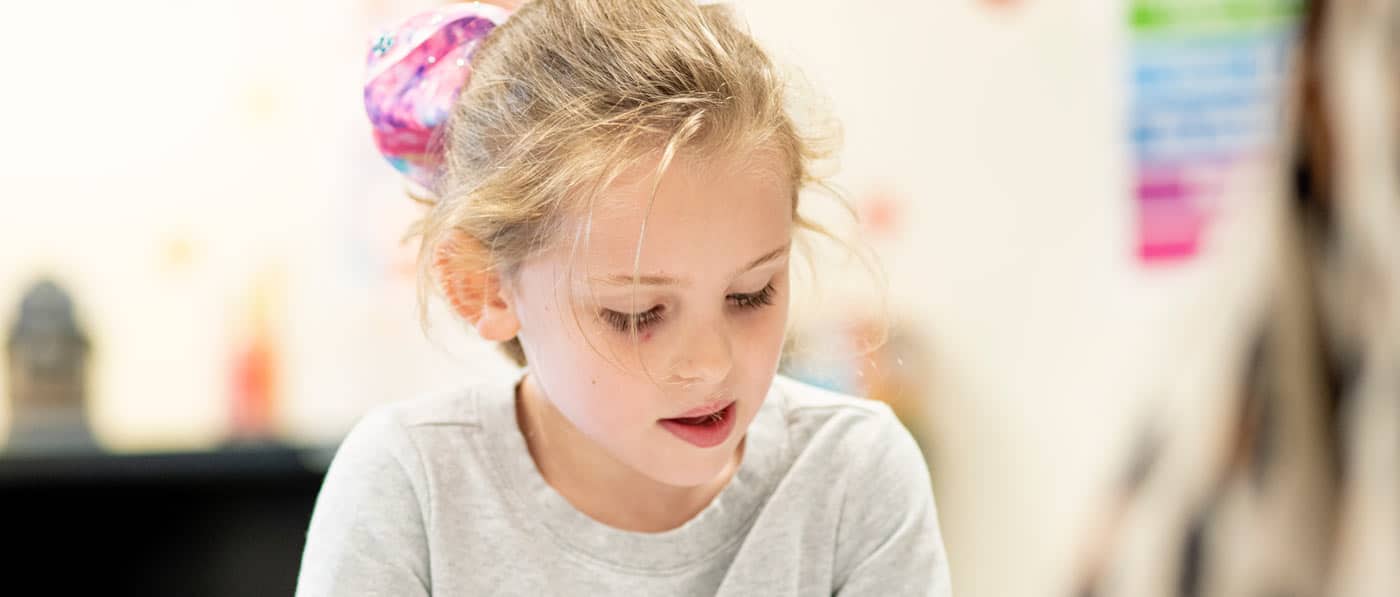While COVID-19 came as a challenge for all involved, it did have an unexpected silver lining that could impact education moving forward. Obviously, the lessons derived are not the full answer. Rather, they represent one spoke in a much larger wheel of ideas—a wheel educators keep turning forward each year to serve students better.
It’s exciting that something that was difficult to adopt may yield positive lasting results. Still, at Groves Academy, we remain adamant about the advantages of in-person learning. In fact, we have made the return to the classroom for four days a week in 2020. We are not in any way suggesting a movement toward distance learning. Instead, what we are discussing is how particular aspects of distance learning could benefit a conventional school setting.
Who Knew Opportunity Would Come Wearing a Mask?
Groves Academy, like most schools across the country, is confronting the new frontiers of distance learning. While there are schools that offered distance learning previously, for most, it’s been a new experience. In our case, distance doesn’t just apply to our school, but also to the Learning Center at Groves Academy where we offer tutoring and diagnostic testing and our Groves Literacy PartnershipsSM where we train teachers throughout the country.
The adoption of distance learning was a necessary response to COVID-19. However, what we are learning may re-shape how learning takes place both at home and in private schools, public schools, and specialized schools.
For schools and educators that did not have distance learning in place prior to the pandemic, the adoption curve has been steep and fast. At Groves Academy, the challenges were even greater.
As an organization that specializes in teaching, tutoring, and testing students with learning disabilities, we rely on tools, methods, and curricula that are specific to the direct remediation of literacy challenges that might not be part of the approach at a traditional school.
Core aspects of our methods require multi-sensory tools that can’t be replicated with a screen. Also, the need for personal relationships tends to be magnified for many students with learning disabilities. That said, rather than finding ourselves limited by distance learning, we’ve discovered a rich reservoir of potential improvements. Not only for our organization but for education everywhere, at every grade level and need.
Exciting Possibilities for the Classroom
Whether an educational institution was previously interested in distance learning, or forced to adopt it, the migration has been profound.
Through distance learning, educators, school boards, parents, and students have reconsidered how learning can happen in new ways. In a sense, we’ve become test pilots establishing new paradigms that can be applied to the in-person experience.
Just as the traditional school experience shaped the approach to distance learning, we can look to distance learning as a way to improve the in-building experience.
How so? Let’s begin with the physical classroom.
Building New Kinds of Private Schools, Public Schools, and Specialized Schools
Schools and learning centers have been built using the same model for decades. Small rooms, assigned by grade or subject matter, within buildings that group ages and subjects into wings. It’s all very neat, arranged, and siloed. But should it be? More importantly, is this arrangement necessary? Could distance learning alter notions about how physical spaces are used for learning?
If so, the concept opens the door to re-thinking how schools are built, designed, and configured. Perhaps there is an opportunity to create shared or flexible learning spaces, just as many offices are now offering.
When the curriculum is mobile, students have the flexibility to move about or find a learning area that suits their preferences. This isn’t just about the room, but also about the workstation they use. It may be a desk, or a couch, or a pile of pillows in a corner.
The variables are vast. It could even be discussed that building schools that more accurately reflect the future work experiences students will face, may better prepare them for future employment scenarios.
Finding a New Time of Day to Learn
How else could the traditional school model evolve? Another possibility is the concept of school hours. While we have no plans to adjust the school hours at Groves Academy, it’s worth considering what a change like this could mean.
For many schools, distance learning has become a blend of synchronous and asynchronous learning experiences. From the Groves Academy perspective, this concept could be brought into a traditional school building experience.
Say, for example, all synchronous classes were held between the hours of 11 a.m. and 2 p.m. Why, then, should a student be in the building from 8 a.m. until 4 p.m?
There could be an opportunity to create flexible learning hours. Students would still be required to be on-site for a defined number of hours. However, the hours could shift to fit their needs and learning practices.
Kids who need more sleep could attend from 10 a.m. to 6 p.m., for example. Early risers might excel between the hours of 7 a.m. and 2 p.m.
Yes, expanded hours creates new challenges about staffing, building access, and more. However, when you look at these challenges, they are all addressable. Mostly, it feels hard because it’s not what we are accustomed to.
Students and Educators Working Together In New Ways
Collaborative learning is another opportunity that distance-learning fosters. Using conferencing tools like Zoom or Google Classrooms, students are collaborating with classmates, teachers, tutors, advisors, and subject experts located in other geographic areas.
Obviously, remote collaboration and conferencing tools were available before COVID-19. The difference now is that teachers and students have greater comfort using video conferencing and other digital collaboration tools. It’s become part of everyone’s personal tool kit.
Ask yourself, how strange does it sound to hear your child study art in the dining room? Or to see them working online with a tutor who lives in another community? Now compare your answer to how you might have felt about seeing that in 2019? What seemed foreign and overly technical back then is now simple to accomplish.
In many ways, distance learning has pushed us to not just know the capabilities of technology, but embrace, use, and make it native to our daily experience.
There Are Challenges to Consider
While the opportunities of distance learning are intriguing, we’d be remiss if we didn’t recognize the challenges it presents.
First and foremost is screen time. Second is the need to support the relational connection between a student and teacher, as well as the social-emotional connection students form with classmates and staff. The third challenge is the consistency of the learning experience for the class and the individual.
Better Learning Is Always Worth the Effort
Whether it’s in-person or distance learning, the objective of an educator is always the same. They strive to provide a transformational and empowered learning experience that caters to each student’s needs in the most viable manner possible.
Using ideas adopted from distance learning, educators have the ability to address a broader array of learning styles. In doing so, schools can also continue to provide highly guided, structured, supported, and consistent learning experiences.
Distance learning may just lead to a rethinking of the traditional learning model that many educators and parents are seeking.
Looking Ahead to Create the Best Learning Experience
These are important days with many lessons being discovered all of the time. Our school and the Learning Center at Groves Academy are excited to see what’s happening and how it can be applied to improving the education of learners everywhere. On one hand, we all feel challenged with just keeping pace with the demands of the moment. But on the other hand, we can’t help but imagine where all of this could be leading.
At Groves Academy, we strive to stay at the forefront of these opportunities. By seeking out, adopting, and redefining best practices and new ideas, we believe schools, learning centers, and educators can continue to elevate education outcomes. While the challenges our students face may not match those of other schools, sharing information and ideas will surely make us all better.
If you have questions about what you’ve read, we encourage you to visit GrovesAcademy.org and see how we are approaching the distance learning need.

